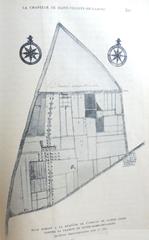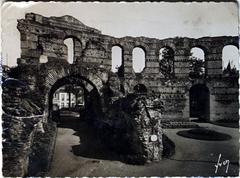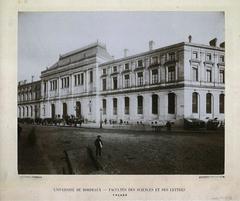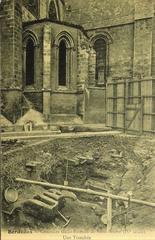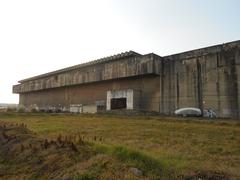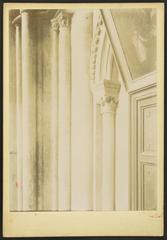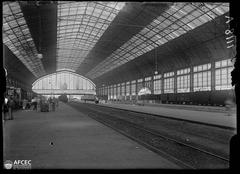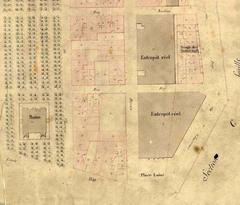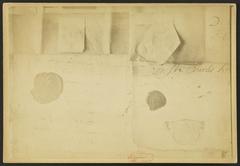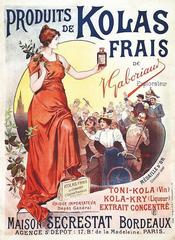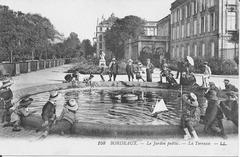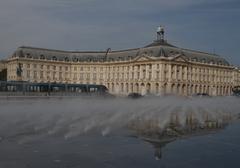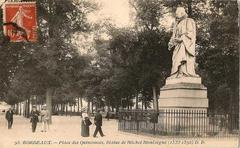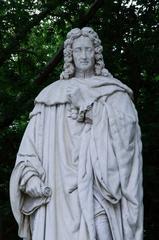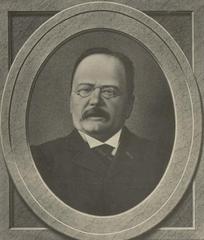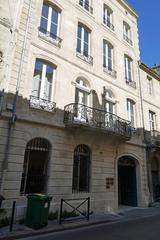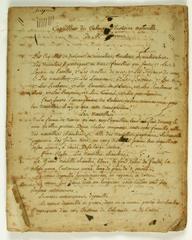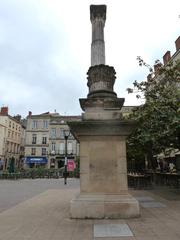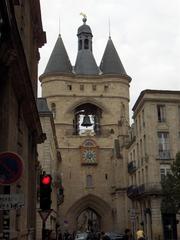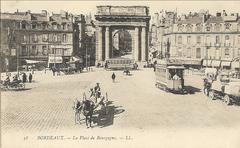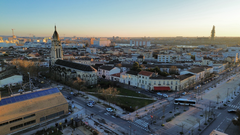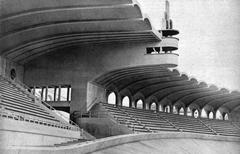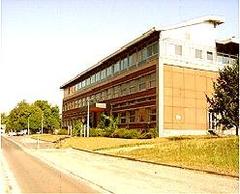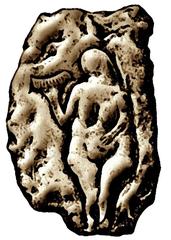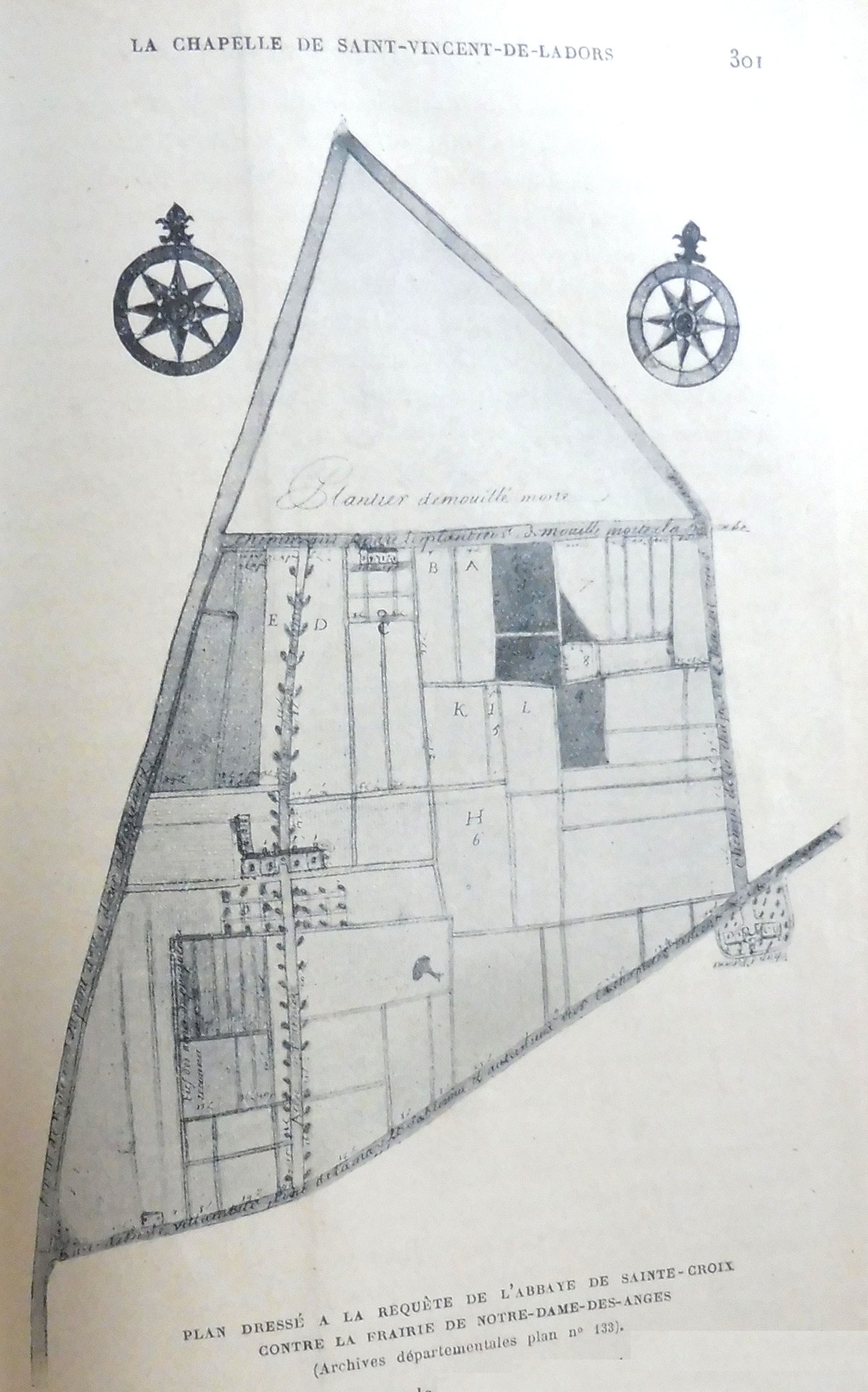
Church of the Holy Cross Bordeaux: Visiting Hours, Tickets, and Historical Sites Guide
Date: 15/06/2025
Introduction
Located in the heart of Bordeaux’s historic district, the Church of the Holy Cross (Église Sainte-Croix) is a monument of exceptional architectural beauty and profound cultural heritage. With origins tracing back to the 7th century, the church has witnessed centuries of destruction, rebirth, and artistic evolution, making it an essential stop for those seeking to explore Bordeaux’s layered past. This guide provides a detailed overview of the church’s history, architectural highlights, visitor information—including visiting hours and ticket details—and practical tips for making the most of your visit.
Table of Contents
- Introduction
- Historical Overview
- Architectural Features
- Visitor Information
- Getting There
- Nearby Attractions
- Travel Tips
- FAQ
- Conclusion
- References
Historical Overview
Early Foundations and Merovingian Origins
The site of the Church of the Holy Cross dates to the Merovingian era, with its origins as a Benedictine abbey established in the 7th century. Founded near the Garonne River, the church’s early history was shaped by its role as a monastic community and spiritual center for Bordeaux’s southern suburbs. The epitaph of Saint Mommolin, abbot of Fleury-sur-Loire, marks the site’s early significance (m.bordeaux.fr; fr.wikipedia.org).
Destruction and Rebirth
Throughout the 8th to 10th centuries, the abbey endured destruction by Saracen and Norman invaders. Reconstruction efforts—supported by local rulers such as Charlemagne and Count William V—restored the abbey’s prominence as a religious and social hub in the region (m.bordeaux.fr; seebordeaux.com).
Romanesque Construction and Medieval Expansion
The current church structure reflects late 11th and early 12th-century Romanesque architecture. The façade and nave were built during this period, showcasing the Saintongeais Romanesque style with rounded arches, intricate sculptural programs, and a Latin cross plan. The abbey played a central role in Bordeaux’s urban expansion, serving artisans, fishermen, and winegrowers and becoming integrated into the city’s defensive walls by the early 14th century (fr.wikipedia.org; m.bordeaux.fr).
Gothic Transformations and Later History
From the 12th to 19th centuries, the church underwent Gothic modifications, monastic decline, Enlightenment-era building works, and revolutionary secularization. The French Revolution dissolved the abbey, and the church was repurposed before being restored in the 19th century by architect Paul Abadie—who helped preserve the church’s Romanesque character while reinforcing its structure. The adjoining abbey is now home to the École des Beaux-Arts de Bordeaux, reflecting adaptive reuse that maintains the site’s cultural vitality (seebordeaux.com; fr.wikipedia.org).
Architectural Features
Romanesque Façade and Iconography
The western façade is a masterpiece of Romanesque sculpture, with five archivolts and an abundance of iconographic detail. Visitors can admire biblical scenes, zodiac signs, the Labours of the Months, and the enigmatic “rope pullers,” all carved in warm limestone that glows in Bordeaux’s sunlight. These sculptures served as a medieval “bible in stone,” instructing and inspiring the faithful (Bordeaux Tourism; Spotting History).
Interior Layout and Artistic Details
The church’s interior is notable for its grand nave—about 39 meters long—flanked by four aisles, creating a spacious and contemplative atmosphere. The transept and polygonal apse rise to 15.3 meters, featuring Romanesque arcading and sculpted capitals with foliage and mythical motifs. Later additions include vibrant stained glass, which bathes the interior in colored light, and decorative capitals and friezes illustrating biblical narratives and saints (Bigobooking; Free Walking Tours Bordeaux).
Historic Organ and Restoration
A highlight of the church is its 18th-century organ, crafted by Dom Bedos de Celles and renowned for its rich sound and ornate casework. The organ is central to the church’s musical life and is featured in concerts and liturgical events. The 19th-century restoration by Paul Abadie preserved the Romanesque features while reinforcing the structure and updating decorative elements (France Orgues; fr.wikipedia.org).
Visitor Information
Visiting Hours
- Monday to Saturday: 9:00 AM – 12:00 PM and 2:00 PM – 6:00 PM
- Sunday: 10:00 AM – 12:30 PM and 3:00 PM – 6:00 PM
Note: Hours may vary during religious services or special events. Always check the official Bordeaux tourism website before your visit.
Tickets and Admission
- Admission: Free of charge
- Special Exhibitions/Tours: Some guided tours or exhibitions may require tickets, which can be reserved online or at local tourist offices (Free Walking Tours Bordeaux).
Guided Tours and Accessibility
- Guided Tours: Available in French and English, typically lasting 45–60 minutes. Booking ahead is recommended, especially in peak seasons.
- Accessibility: The church is wheelchair accessible via ramps at the main entrance, with accessible restrooms available nearby. Additional assistance can be arranged upon request.
Photography Guidelines
- Photography: Permitted inside the church, but flash and tripods are prohibited to protect artworks and respect the sacred atmosphere.
Getting There
- Address: 10 Rue Sainte-Croix, 33000 Bordeaux, France
- Tram: Line B or C, stop “Sainte-Croix”
- Bus: Multiple lines serve the area; see Bordeaux Public Transport for routes.
- Parking: Limited street parking is available; public transport is recommended.
Nearby Attractions
- Place de la Bourse: Iconic square with the Water Mirror
- Bordeaux Cathedral (Saint-André): A stunning Gothic landmark
- Garonne River Quays: Scenic walks and dining options
- Musée d’Aquitaine: Museum of Bordeaux’s archaeology and history
Travel Tips
- Visit early or late in the day for a quieter experience.
- Comfortable footwear is advised due to cobbled streets.
- Look out for organ concerts and cultural events advertised on the church’s noticeboard or tourism sites.
- The area around the church is safe and features several cafés and shops.
Frequently Asked Questions (FAQ)
Q: What are the Church of the Holy Cross Bordeaux visiting hours?
A: Monday–Saturday: 9:00–12:00 and 14:00–18:00; Sunday: 10:00–12:30 and 15:00–18:00. Confirm on the official site before visiting.
Q: Is admission free or are tickets required?
A: Entry is free. Tickets may be required for guided tours or special events.
Q: Is the church accessible for visitors with disabilities?
A: Yes, with ramps and accessible facilities.
Q: Are guided tours available?
A: Yes, in multiple languages. Advance booking is advised.
Q: Can I take photos inside?
A: Yes, but without flash or tripods.
Conclusion
The Church of the Holy Cross offers a captivating journey through Bordeaux’s spiritual, artistic, and communal history. Its Romanesque façade, majestic interior, and vibrant cultural programming make it an unmissable destination. With free admission, accessible facilities, and its central location, the church welcomes all visitors—whether you are seeking architectural inspiration, historical insights, or a quiet moment of reflection. For the most rewarding experience, plan your visit during quieter hours, explore nearby attractions, and take advantage of guided tours or special events.
For updated hours, events, and visitor resources, consult the official Bordeaux tourism website or download the Audiala app for self-guided audio tours and expert travel tips.
References
- Visiting the Church of the Holy Cross (Sainte-Croix) in Bordeaux: History, Tickets, and Travel Tips, 2025, (m.bordeaux.fr)
- Abbatiale Sainte-Croix de Bordeaux, Wikipedia, 2025, (fr.wikipedia.org)
- Bordeaux Tourism, Church of the Holy Cross, 2025, (Bordeaux Tourism)
- SeeBordeaux, Religious Sights: Église Sainte-Croix, 2025, (seebordeaux.com)
- France Orgues, Église Sainte-Croix, Bordeaux Organ Information, 2025, (France Orgues)
- Free Walking Tours Bordeaux, Church of the Holy Cross, 2025, (Free Walking Tours Bordeaux)
- Camino Ways, Camino de Santiago Routes, 2025, (Camino Ways)
- Bordeaux Public Transport, InfoTBM, 2025, (infotbm.com)
- Ministry of Culture, Monument Historique Listing for Église Sainte-Croix, 2025, (pop.culture.gouv.fr)
